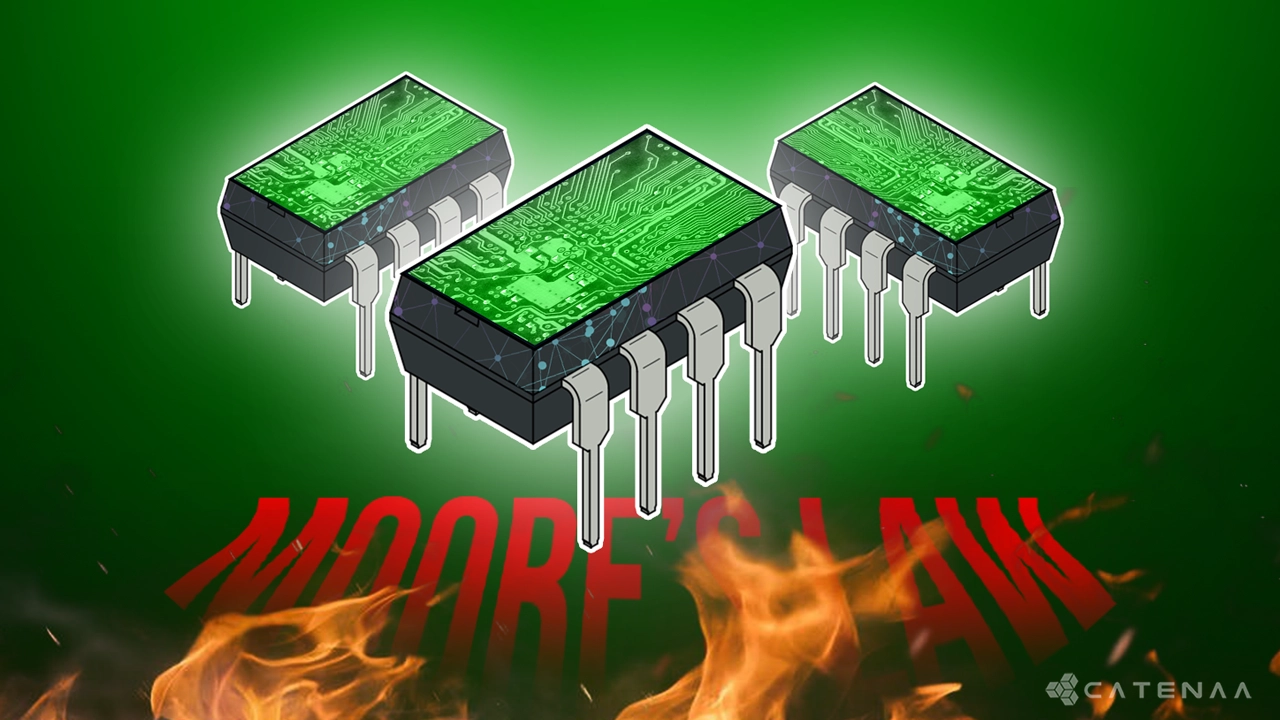Catenaa, Tuesday, May 27, 2025-Nvidia CEO Jensen Huang has proclaimed the end of Moore’s Law, declaring that modern AI innovation has far surpassed the traditional pace of chip development once defined by it.
Speaking at Foxconn’s keynote during Computex, Huang championed Nvidia’s advances in packaging and proprietary interconnect technologies as the new gold standard for performance growth.
Moore’s Law, historically viewed as the rule that computing power doubles every two years (18 months to be precise) through shrinking chip nodes, no longer applies in today’s AI landscape, he said.
“The sky is the limit,” he told the audience, as Nvidia continues to defy legacy trends with increasingly shorter development cycles and breakthrough technologies.
Huang credited technologies such as TSMC’s advanced CoWoS (Chip-on-Wafer-on-Substrate) packaging and Nvidia’s NVLink interconnect for enabling exponential gains without relying on smaller nodes alone.
NVLink, in particular, allows Nvidia to scale AI performance across interconnected platforms, achieving rack-scale computing levels once thought unachievable.
The Nvidia chief revealed that the company, which is currently operating on a six-month product release cycle, could eventually move to quarterly updates—a pace unheard of in the semiconductor industry.
With recent architectures like Vera Rubin and Blackwell Ultra releasing just six months apart, Nvidia’s AI roadmap is accelerating.
As demand for AI computing surges globally, Huang positioned Nvidia not just as a chipmaker but as a trailblazer in a new era of AI-driven hardware development—what he calls “Huang’s Law.”


